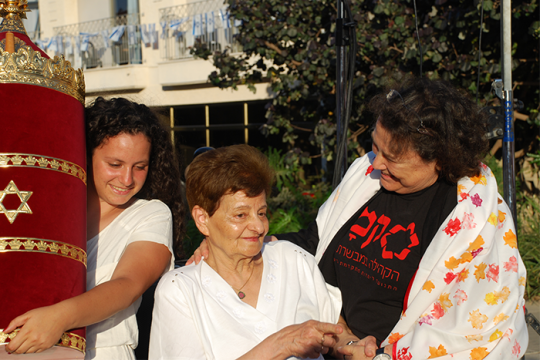.png)
Photo by Genie Milgrom
During the Spanish Inquisition, there were plenty of ways that one could be identified as a Jew. There are records of a servant accusing her mistress of, among other things, having friends over on a Saturday and relaxing with them rather than attending to the work of running the household. To the servant, this was an obvious indicator of her mistress observing Shabbat and thus, being a "secret Jew."
Another way people would identify their neighbors as Jews was observing whether they would eat non-kosher food that was popular with the Christian population such as pork, sausage, or fish without scales. While some Jews did break and eat these things, others took more ingenious methods to simultaneously keep kosher dietary rules and mitigate any suspicion that they were maintaining Jewish traditions, thus avoiding the scrutiny of the Spanish Inquisition. This was mostly done through disguising kosher food as non-kosher, leading neighbors to believe that they were eating pork chops, sausage, and even ham though in actuality they were eating perfectly kosher duck, chicken, and bread.
Here are three such dishes that likely saved the lives of many Jews throughout the Spanish Inquisition.
1. Chuletas (Pork chops)
These tasty delights might appear to be made of pork, but on closer inspection, they're actually closer to French toast! The bread is molded into the shape of a pork chop and cinnamon sticks act as a stand-in for the rib bone. After these were cooked, they would be drizzled with tomato jelly and topped with sweetened pimentos. Though these wouldn't fool anyone as far as smell goes, there are stories of Jews cooking pork in their ovens while frying the less-pungent substitutes separately so that the smell would be associated with the end product, even if the dish itself kept to kashrut. In her cookbook, "Recipes of My 15 Grandmothers," Genie Milgrom explores her own crypto-Jewish heritage and shares her family's recipe for chuletas .She shares that, "they are the best look-alike to a pork chop that I have ever seen!"
2. Adheira de Mirandela
In Portugal, many families would dry pork sausages from their ceilings as a way to prepare for the onset of winter. The lack of these sausages during the fall and winter months came to be a giveaway of a Jewish household. When the Spanish Inquisition made its way to Portugal, it became imperative to find some way to appear as though these families were setting aside pork sausages alongside their neighbors to eat over the coming winter. Enter theAdheira de Mirandela, a sausage made primarily of garlic, breadcrumbs, and kosher meat such as chicken or beef. In the homes where these sausages were cooked, the garlic enabled them to smell similar to the homes of other families, and the obvious presence of hanging sausages enabled the Jews of Portugal to better blend in with their neighbors.
3. "Jewish Ham"
This dish is popular even today and is recognized as a traditionally "Jewish" dish as far away as Italy! Professor Ana M. Gómez-Bravo of the University of Washington's Stroum Center for Jewish Studies shares how you can cure whole ducks or geese in kosher salt and smoke them to create a convincing ham look-alike. The rest of the meat can then be minced and mixed with spices before being stuffed into the neck and cured to create another version of kosher sausage similar to Adheira de Mirandela.
Each of these foods still serve many purposes today. In addition to being obvious reminders of the terrible persecution and brutality that Jewish populations have suffered over the centuries, they also remind us of the ingenuity and stubborn perseverance that has always been part of being Jewish (even the Torah calls us a "stiff-necked people"). They also connect us to the global Jewish family in a tangible way. Reading these recipes, you can almost hear the voices of those who came before us saying, "We are still here. Our oppressors failed. You are our triumph, and you will survive, just as we did."
Related Posts

Extraordinary Ordinary Heroes

Women of Valor: Revisiting Biblical Role Models

